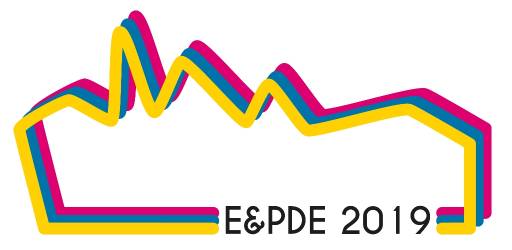Type:
Year:
2019
Editor:
Bohemia, Erik; Kovacevic, Ahmed; Buck, Lyndon; Brisco, Ross; Evans, Dorothy; Grierson, Hilary; Ion, William; Whitfield, Robert Ian
Author:
Series:
E&PDE
Institution:
Liverpool John Moores University, United Kingdom
Section:
Innovation 1
DOI number:
ISBN:
978-1-912254-05-7
Abstract:
According to the Royal Academy of Engineering (2014) engineering education is changing in a way that stifles, and indeed suppresses the creative and innovative capacities of students at a time when the UK Government (2017) maintains innovation is key to delivering prosperity in the global digital economy. In order to support the digital economy effectively, we do, of course, need the support and talents of designers and engineers. Indeed, in a report by the Design Commission (2014) we must “… nurture innovative digital work throughout the UK, specifically through their strategic use of design.”
If the key to a successful digital economy is innovation, and the key to innovation is creativity, then surely we need to nurture creativity in the disciplines of design and engineering?
This apparent need is set against a backdrop of primary and secondary education systems that have seen some debate over the very nature of creativity. According to educationist Sir Ken Robinson (2006), our education system is outdated, unfit for purpose and killing the very quality required for innovation – creativity. This view is juxtaposed with the UK Department for Education Chief Scientific Adviser, Tim Leunig’s (2016) hypothesis that “True creativity is based on knowledge which in turn is based on literacy.” Whatever the truth at this level of education, the truth at the tertiary level – at least according to the RAE – is that engineering students are leaving university less creative than when they arrived. Clearly, tertiary level design and engineering education needs a ‘creative revolution’ if the UK is to flourish in the digital economy.
Embedding creativity, and therefore innovation, at the heart of the disciplines of design and engineering is something that the current authors have achieved in not only the design of the curriculum of the programme but also where, in Liverpool John Moores University, Product Design Engineering resides.
This paper describes the rationale for situating the undergraduate degree programme within the Department of Electronics and Electrical Engineering – an unusual home for this discipline – and details the results of a study that sought an answer to the question: “Can creativity be nurtured and blossom in design engineering?”
Based on the 100 Day Design Challenge and inspired by Sir Ken Robinson’s book Finding Your Element (2014), this small study of some 30 first-year students followed their journey along paths of serious play, experimentation, creativity, innovation and educated risk-taking.
Findings from the study mirror observations of graduates from this programme entering the world of work – not in a state of diminished creativity – but rather the opposite. Product Design Engineering graduates blossom over 3 years to become capable, confident and innovative engineers adding real value wherever they end up – despite, not thanks to, the current state of higher education.
This paper shows how innovation and creativity could be embedded in any design or engineering degree programme and how these qualities could not only improve degree programme outcomes for graduates, but also the UK’s role in the global digital economy.
Keywords:





